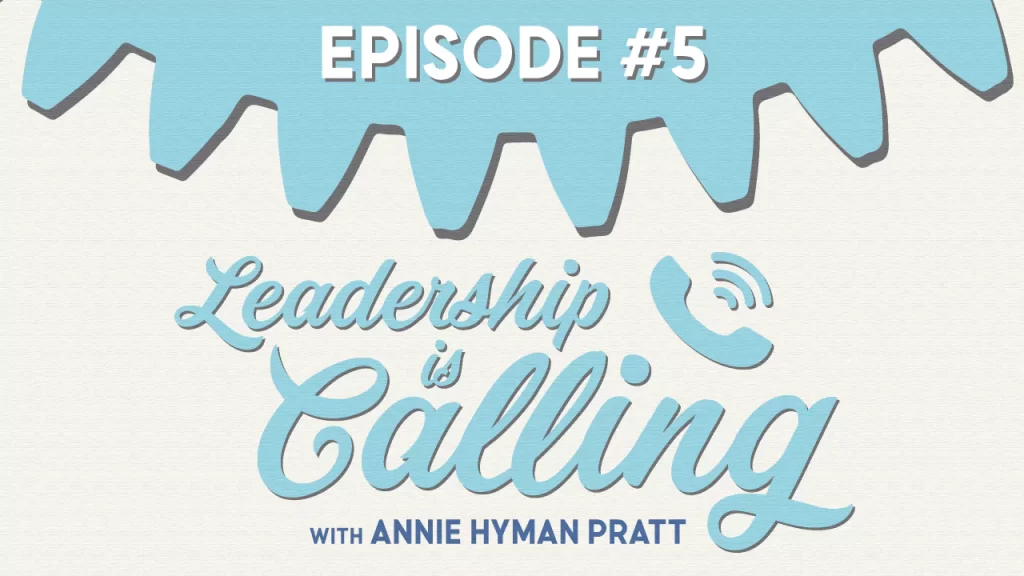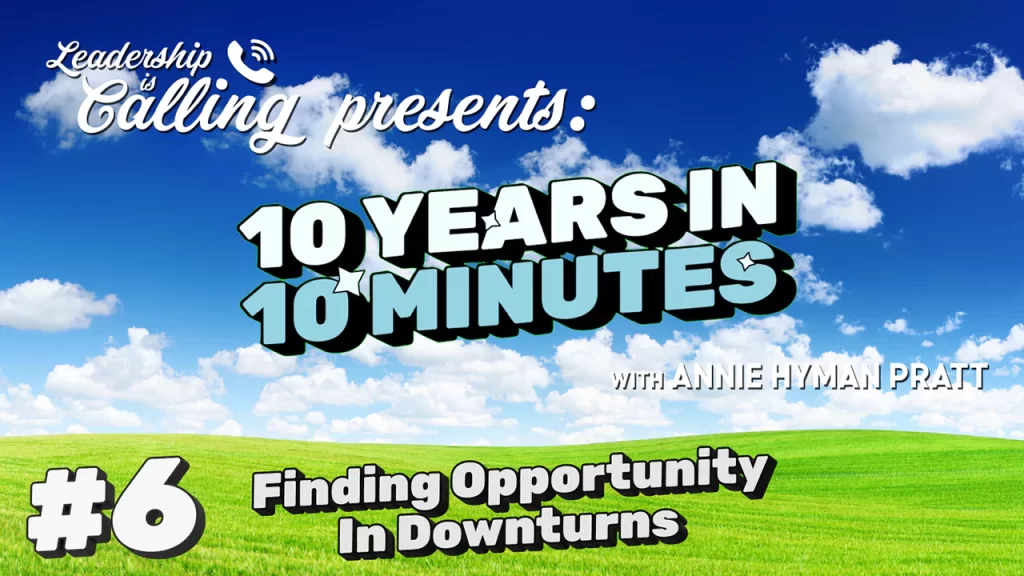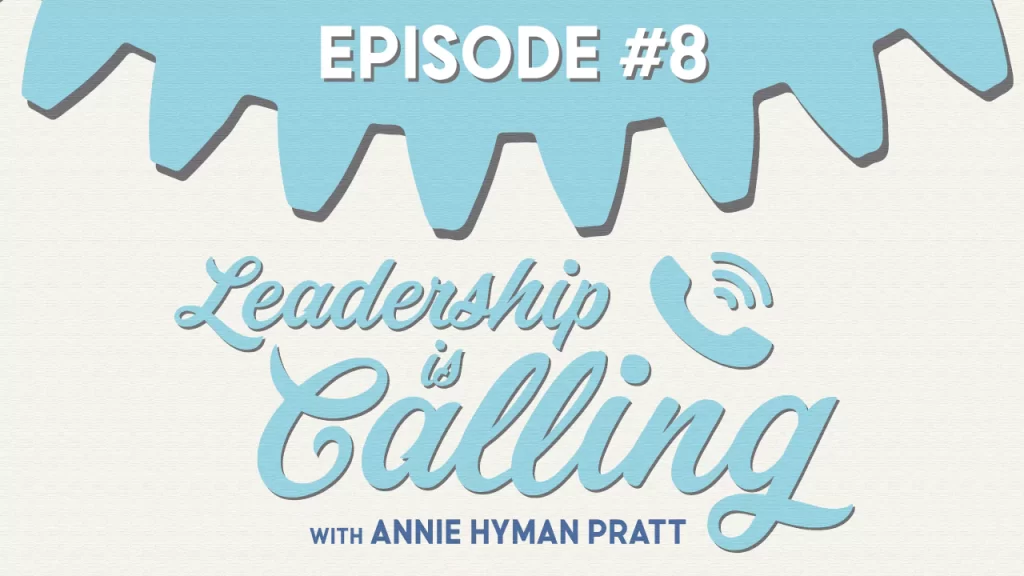Episode #08: If My Team Would Just Prioritize
Leadership is Calling Episode #08
Annie Hyman Pratt
- Description
- Transcript
If My Team Would Just Prioritize
“Prioritization seems like it should be the miracle cure, but in reality, it is way too simple a concept.” -Annie
Why is simply telling your team to “prioritize better” ineffective?
CEO Annie Hyman Pratt discusses why the common directive to “prioritize better” oversimplifies the complex process of resource allocation and priority setting. She explains the importance of understanding available resources, goals, future impact, and team member context when making prioritization decisions.
Learn key strategies for resource allocation and decision-making.
Key Points
- Prioritization is complex, requiring info on resources, goals, and future impact.
- CEOs get stuck making all priority decisions when team lacks context.
- Ask team how they’re allocating resources and why before telling them to “prioritize.”
- Successful companies allocate most resources to future impact, not just catching up.
- People are a limited resource; productivity declines if they’re overburdened.
Related Resources
Leadership Skills: The People Part
Leadership Development Articles: COMPASSION—Essential Key for Today’s Entrepreneurial Leaders | Leadership in Times of Uncertainty: Decision Making
Downloadable Leadership Tool: The Key Basics of Agreements

Auto-Generated Transcript – unedited version
If My Team Would Just Prioritize
This is Leadership is Calling, a podcast that brings you leadership and business tips anchored in the people part. I’m Annie Hyman Pratt, CEO and founder of Leading Edge Teams.
Hello everyone, I am Annie Hyman Pratt, and you are listening to the podcast leadership is calling. Today we are going to talk about prioritization. Prioritization is something that I hear about from CEOs and high level leaders all the time, and it usually sounds something like this: “If my team would just learn how to prioritize better, we could actually get everything done, do a better job, and we’d never be overwhelmed.”
Okay, so maybe you’ve heard something like this in the past, or maybe you’ve even said something like this or at least thought about it in the past. I know I have. But I want you to know that it’s not crazy that things don’t happen that way. So prioritization seems like it should be the miracle cure, but in reality, it is way too simple a concept. It doesn’t cover enough to actually be helpful. And what I mean by that is when you tell the team to prioritize, okay let’s think about that. The first thing is to prioritize based on what? Is it going to be based on what should have happened yesterday? Is it going to be based on what’s going to make the best, the highest impact for the product launch that’s going to happen in two weeks? Should they prioritize based on the huge growth plan that you guys have for next year?
Prioritization sounds good, but in reality it’s actually not easy to do because you need so much information to allow you to make good choices. And that’s what prioritization is right? It’s basically saying “What should I do first? What should I do next?” And what that is really all about, because it’s not really about the rank of the things we’re going to do as if we just rank them and we do the top things and whatever falls off the bottom is fine. Because that’s one of those things, I usually have leaders who say it’s going to be fine if things fall off the bottom, and you know what, when it does happen they’re not fine.
So what prioritization is really all about is allocating resources, allocating your resources based on the impact, the impact, the positive impact that those resources are going to have now for what’s happening now and even more importantly what’s going to happen in the future. And to make those good decisions, it’s like thinking about it as if you have a hundred points. That’s your resource bucket. And resources are everything from money, people’s time, people’s energy, people’s focus.
You know if we could have somebody be 100% productive all day every day on difficult math, that’d be awesome. But that’s not how it works. People have only a limited amount of what they can accomplish in any one day, right? And any week or month. And as much as we want to optimize that, right, let’s not have it go down from what’s a good level to opt. We can optimize that but we can’t make a ton more on the spot. We can certainly get more efficient at the things we do, but if this were a sport like basketball, it’s not like we could fit in 200 more games in the season and everything would be fine. Basketball players have a limited number of games that they can play and be at their best, right? We can stretch it but we can’t just create resources out of thin air.
So we need to think about whether we have like a hundred points. That’s how I think it’s easiest to think about it. And what are we going to allocate those points to? Because if you have something on the list that you’re not gonna we don’t have room for any points then you’re going to have to make a real clear decision about whether we’re actually not doing that. We’re not doing that right now at least. And the best way to allocate those points is based on the impact.
So it’s like what’s going to have the highest impact on what we’re doing now, on what we’re executing. Not what we should have executed yesterday but really looking at the picture of “Well we got so much done, you know, the past. If we were dropped out of the sky today into this project what would we really do from here?” Right? The common way of phrasing this is the sunk costs are sun. What we did in the past we can’t undo or redo.
So now we’re in a situation where we want to look at where everything is now, what kind of impact could putting resources on this make? It could be that you want to put half your resources for the next month into the current product launch that’s happening because you think you can double revenue that way. Perhaps you want to put in 20% of the resources and you still think that you can get, you know, like a 70% increase or something. That might be a really good investment. But you need to think about it in terms of “I only have 100 points to kind of place my bets.”
And importantly, you can’t use or I shouldn’t say you can’t, you can’t but you won’t be successful in the long run if you put all your points on the current projects. The most successful companies are allocating most of their, well I should say the majority, the majority of their points on things that impact the future, things that are upcoming, right?
And the more complex the project and frankly oftentimes the more successful the company, the longer planning cycle they’ll have because the thing that actually ends up saving resources and increases performance at the same time is to have time to think, is to have time to think, to evaluate things, to test, to take a step and be able to look at what happened, gain new information before taking the next step on a project, right? All of that needs some time.
It also needs, it’s first thing it needs, it also very much needs for people to be able to make good decisions whether for the short term or the long term. It also very much needs the people making those decisions to have a really solid understanding of the context in which they’re making the decisions. So what I mean by that is why are they thinking what they’re thinking, right? Like do they, do they know what the best outcome looks like and are they basing their choices on “I understand where I can put my points. I understand what the outcomes are supposed to look like so that I have a sense of what’s really important to this business,” right? Because if you don’t know then you will easily put all of your points on the things that should be done today or the things that should have been done yesterday and that you’re just going to try to catch up on today. And you won’t be able to put points on things that are important to your business success for the future. And that you need to understand what that is, right? You can’t just understand the picture right now and be good at prioritizing.
I hope everybody can see that. And CEOs tend to get really stuck in making all decisions about what will be the priority today or where the resources will go when CEOs are the ones who have to make that decision all the time. It’s because their team doesn’t have enough context, doesn’t have enough information about the big picture, about the big picture now and the big picture in the future, and where their parts fit. Because then you’re asking without that you’re asking them to make a decision based on like a third of the scene, right? The scene of what’s happening exactly today is a third or less of the variables that you need in good decision making.
You need to be thinking about how this is supposed to be, how is this launch for example, this product launch, how is this product launch performing compared to what we, how we wanted it to perform? And let’s say we needed a product launch to do a million dollars and we can see that it’s on track to do 850,000. Okay, so the question is should we take more resources? We think we could probably get to the million but should we take some of our resources, some of our points that are on the next launch which is supposed to be two million dollars? Should we take some of those points off of that project and put it onto this project for 150?
And if you don’t know anything about the next project or that it’s supposed to do two million dollars, if you don’t know how that really works you can’t make a decision of should we live with the 850 or should we pull some resources back to this project so we can make a lot more now, right? We don’t, we don’t have any sense of what that hundred and fifty thousand dollars worth if the next product launch is supposed to be five million dollars.
So I’m just using kind of big round numbers to make the point here but if that next project is supposed to be five million dollars and you have reasonably good confidence in it, you might not want to pull any points back to this current project because you may even think like “Yeah we could get another 150 but maybe we’d only get another 50.” And if we only got another 50 well that’s certainly not worth pulling some resources back.
I hope that makes good sense. And the next time that you’re thinking about telling your team to prioritize better, I think maybe a great thing would be to ask them a couple questions instead. To ask them “Hey how are you allocating the resources right now? Like if this were a pie chart tell me about how much you are doing, you know, project A and how much are you using for Project B? And you know how much time you spend on maybe email and administrative stuff? How much do you spend on this future project that we just started?” Just you know, give me a sense of what that looks like.
And share with me why you think that’s the right allocation? And if you have had ideas about doing it differently, I think that is a great way to approach someone because you’re asking them to share their thinking. And that way you can join in their thinking instead of giving them a demand like “prioritize better” which I promise you nobody really knows what that means.
Again prioritize based on what? They’re not mind readers. They don’t have all the context that the CEOs or the high level leaders have. They just don’t. So we need to meet them where we’re at. And the best way to do that is to find out what they’re thinking first, by far more effective than going into a monologue of just telling them you know how you see it.
So that’s what I wanted to share with you today. And I’m so glad you’re listening to our podcast, and I look forward to seeing you next time. Bye!
Be sure to like, comment and subscribe to Leadership is Calling to learn more about this episode’s topic. Pick up a copy of my book The People Part.
Want to learn more about how to uplevel your leadership skills and create a collaborative team that helps you drive results? Go to LeadingEdgeTeams.com/schedule to learn more about working with us and to schedule a call.




















